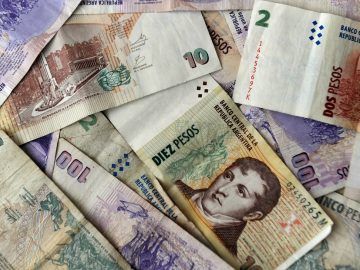What Caused the Great Depression? The global world appears to be crashing on you and there is no spot to run. October of 1929 saw the collapse of the commodity and currency markets, which obliterated 40 percent of the value of common paper stock, decimating the investment portfolio of many. This represented only a single taking place as the tragedy more and continued and more people became penniless, which rendered them helpless in providing for the needs of their own families.
Folks were pleading for the money and food for his or her children as they aimlessly roamed the roads. Many businesses were shut and banking institutions were declining. By 1932, typically one out of four Americans was unemployed. Despair and hopelessness were mirrored on the encounters of the folks for they noticed no hope in sight as all types of bad news filled the air. Aside from the 3 R’s, the New Deal started a political realignment that made the Democratic Party almost all. This ongoing party centered its platform on liberal ideas, big city machines and empowering the labor unions, cultural minorities and the white South.
Some of the opposition Republicans supported the program, while others were non-supportive claiming that such program is destructive to business and development. Was the New Deal Successful? By the right time that Franklin Delano Roosevelt was inaugurated as Leader in 1933, 1 / 4 of the entire American human population was unemployed. Consumers’ confidence was low due to the currency markets crash; they halted purchasing goods from factories and low production led to employees’ mass lay-off.
The jobless got minimal money left to invest leading businesses to steadily decline. At the peak of the Great Depression, there have been more than 13 million people unemployed. More and more people rely on the charity and Federal government to supply their families. 1. The Civilian Conservation Corps (CCC) offered teenagers between 18 and 25 years to work in camps implemented by the army. 2. A Public Works Administration (PWA) gave employment for skilled construction workers on a wide variety of projects. 3. The Federal Emergency Relief Administration (FERA) distributed immediate relief to hundreds of thousands of people, usually in the form of direct obligations. Why Unemployment in the Great Depression? Agriculture was affected during the Great Depression greatly.
After the substantial crash of the stock market, prices were declining very fast. In the spring of 1933, the agricultural sector was on the verge of disaster. In the United States, 25 percent of farmers and 37 percent of most nonfarm employees were completely jobless. Some people had nothing to consume; numerous others lost their farms and homes. Homeless individuals climbed aboard freight trains which were crisscrossing the nation. Cotton farmers dispossessed of their farms; loaded their bags and drove their dilapidated Model Ts all the way to California expecting that the posters about abundant jobs were true. 1. Agricultural Adjustment Act (AAA) provided economic aid to farmers.
2. Commodity Credit Corporation purchased goods to be stored until prices shall rise. 3. Soil Conservation Service was another national government agency providing relief to farmers. The Great Depression transformed the lives of individuals who lived and farmed on the fantastic Plains altering America’s life-style. Government financing was available to help displaced people endure the Great Depression; however, what took place altered the continuing future of agriculture for years to come. Some government programs helped these survive the 1930s but this transformed affected the future of agriculture permanently.
Farmers have to contend with the dust, insects, heat of summer time and cold of winter. Families are deprived of heat, light, indoor bath rooms, and other facilities; and the necessity of raising their own food. In the ’40’s, 2.5 million people still left the Plains expresses, which was designated as the biggest migration in American background. They contain farmers, professionals, retailers, while others.
- 4 Principles of Marketing Strategy
- Leasing/Izara(fvov) mode (Hire purchase, Izara-Bil-Baia, Leasing)
- The post-closing trial balance differs from the adjusted trial balance for the reason that it can not
- Right degree
- A project with a positive NPV may have a negative NPV when flotation costs are considered
Eventually, they were contending for a seasonal job with surprisingly low pay. Many ended up carrying out seasonal jobs like picking plants at extremely low wages. By 1940, nearly six million farmers were getting Federal subsidies. Industry suffered with the economic crash of 1929 to 1932. In America, the indication of industrial production dropped from one hundred in 1929 to fifty-five in 1932, the biggest plunge compared with all previous commercial economies.
2. The NIRA secured the right to bargain as a collective group by using labor unions to represent the individual employees. In the financial planning aspect, the First New Deal was inadequate therefore the authorities and the private sector considered it necessary to move to the next New Deal.



